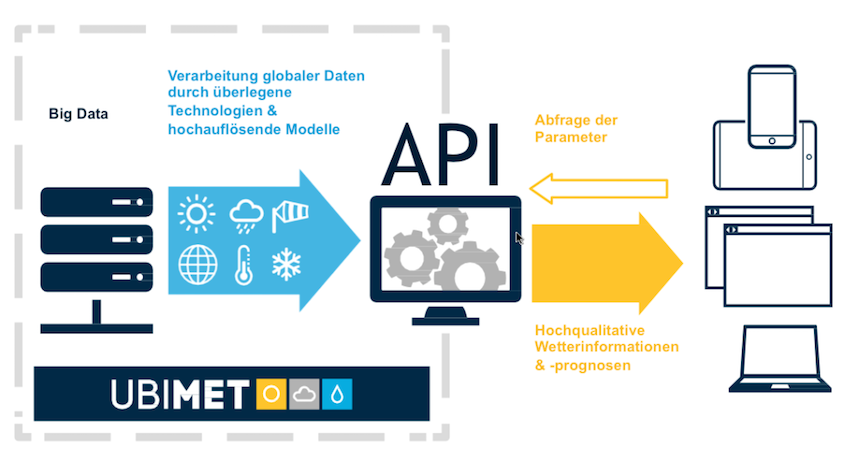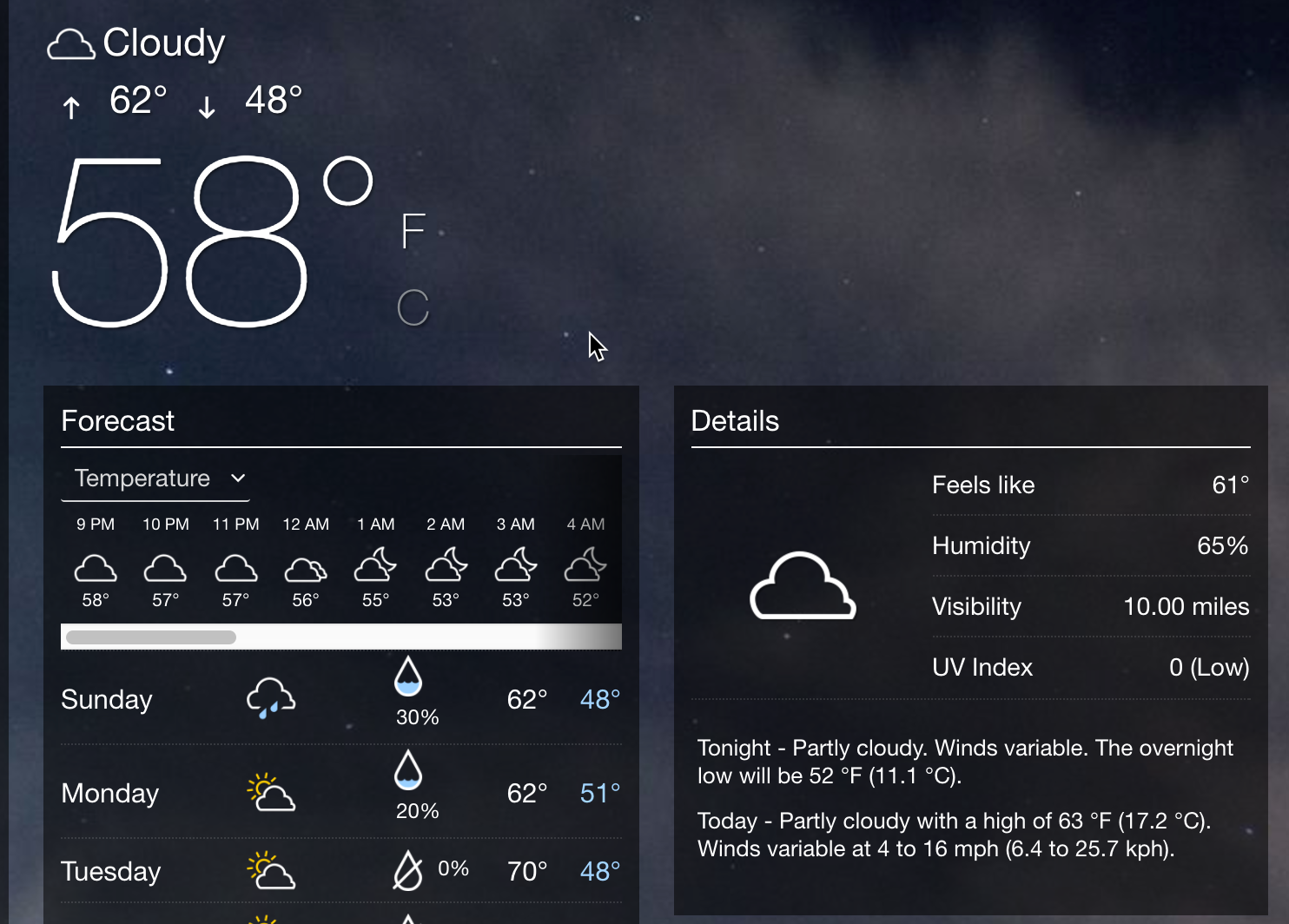

(That’s not a bad idea for any app, actually.) CarrotĬarrot offers data on current and upcoming weather.Ĭarrot may be known less for its weather predictions than for its personality, which offers tongue-in-cheek commentary in audio and / or text on the happenings of the day. However, since most weather apps seem to ask for pretty much the same permissions, we’ve removed the listings and suggest that you simply check out your chosen weather app’s list of permissions that’s at the bottom of its page in the Play Store. Note: in earlier versions of this article, we listed the permissions that each app requested.
Easy weather api link free#
All have free versions with ads, and all but one have paid versions that remove the ads and often include additional features.

But if you’re a weather geek, or you want to be able to tweak your weather report a little more than Google allows, we’ve got 10 alternatives here. Of course, if you want, you can just settle for the “At a Glance” weather widget that Google includes on its homescreen tap that, and you get a reasonably good weather report. (By the way, if you use the iOS version of Dark Sky, that’s going away at the end of 2022 as well.) Originally, the Dark Sky API was going to be pulled as well - leaving a lot of third-party apps desperately looking for a substitute - but that’s been put off until at least the end of 2022. Back in March 2020, Dark Sky was acquired by Apple and almost immediately removed from the Google Play app store.

With the exception of one that used to be very well-liked: Dark Sky. So we’ve put together this guide to what we think are some of the better ones out there. As a result, there are myriad weather apps out there, making it really hard to pick which one to use. Once you have your API key, you’ll be able to test the functionality by doing a GET call on the following URL.One of the more popular uses for phones (besides taking photos and watching TikTok videos) is to check out the weather. We’ll be using the Current Weather Data API they have available for free. Later on, when you’re adding additional features to your weather app, you can come back here to see what other useful weather APIs they have available. You’ll be using their API to get the current weather for our simple weather app. Next, let’s get an API key from Open Weather Map. For today’s demo, we’ll be using the API key for an SDK in staging. There you’ll see keys for each environment and type of key. Then go to Admin Settings and click on API Keys. To find your API key, head over to your Split dashboard, click on the workspace button on the top left. Sign up for a free Split account and get your API key. For that, you’ll need a Split account and an SDK key.

Split Java SDKįor today’s weather app, you’re going to use Split’s Java SDK. We’ll need to get a couple of accounts set up, so we’re ready to roll with our new Spring Boot application. Add API and SDK Dependencies for Your Spring Boot Appįirst, let’s get some prerequisites out of the way.
Easy weather api link how to#
And then, we’ll add two implementations to our weather app and learn how to switch between the two using Split.io treatments. Then we’ll create the scaffolding for our app using Spring Initializr.
Easy weather api link plus#
We’ll begin by getting started with Split plus a free weather API. In fact, it’s so basic that it only tells you the weather in Detroit, Michigan! But don’t worry, after your fifteen minutes are up, you’ll find yourself wanting to add additional features and functionality. For this tutorial, we’re going to create a basic weather application. Today you’re going to build a simple Spring Boot web app and see how you can easily use feature flags to change functionality.


 0 kommentar(er)
0 kommentar(er)
